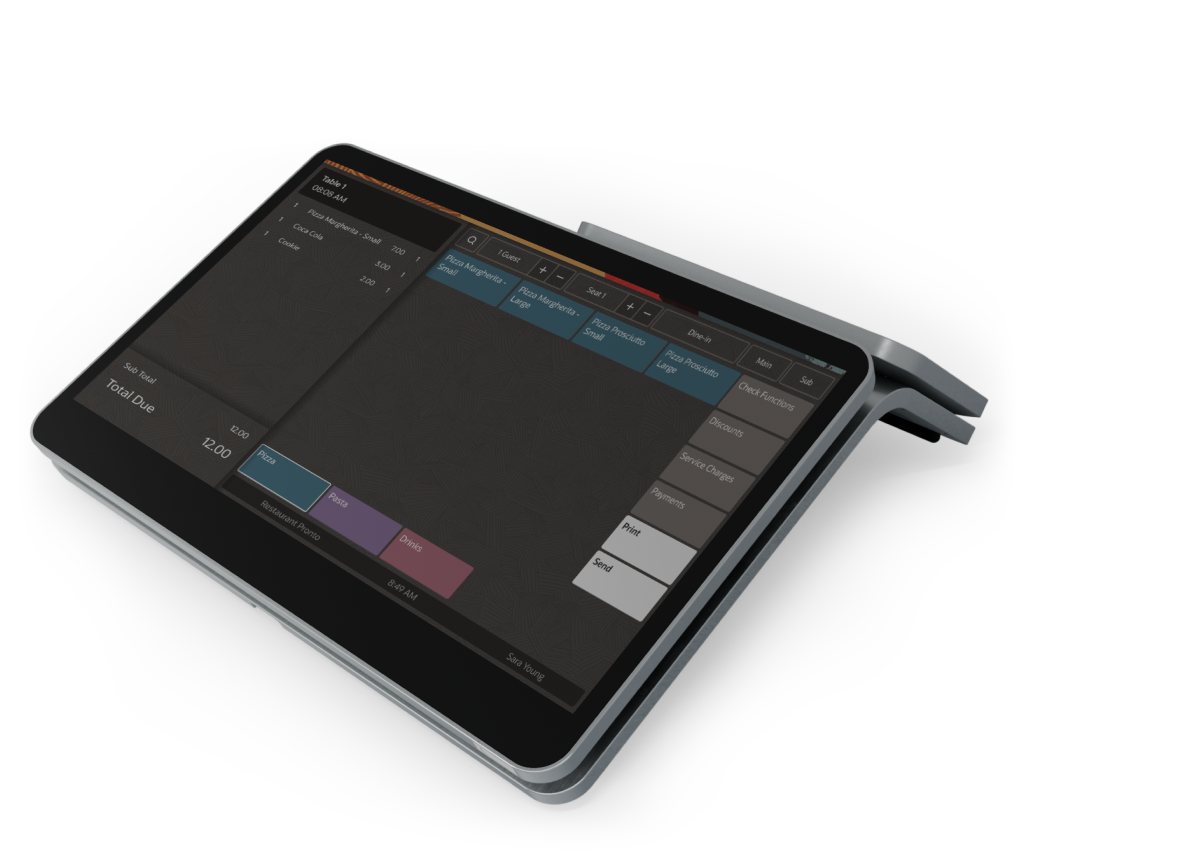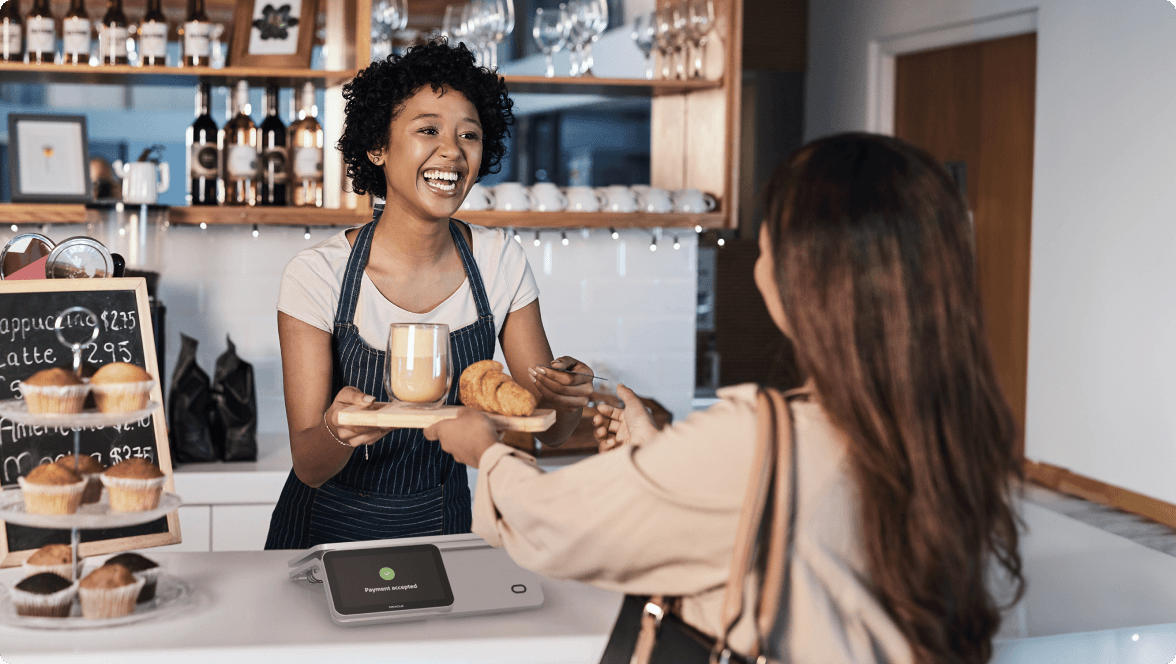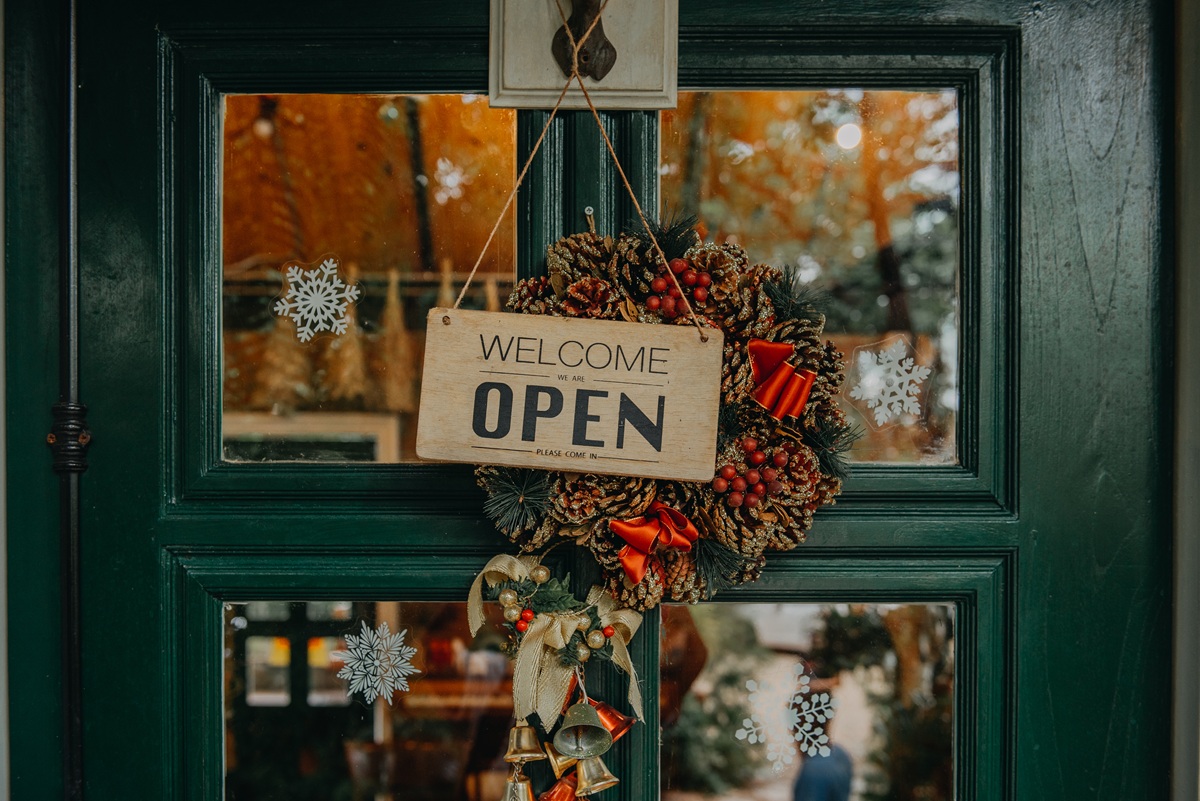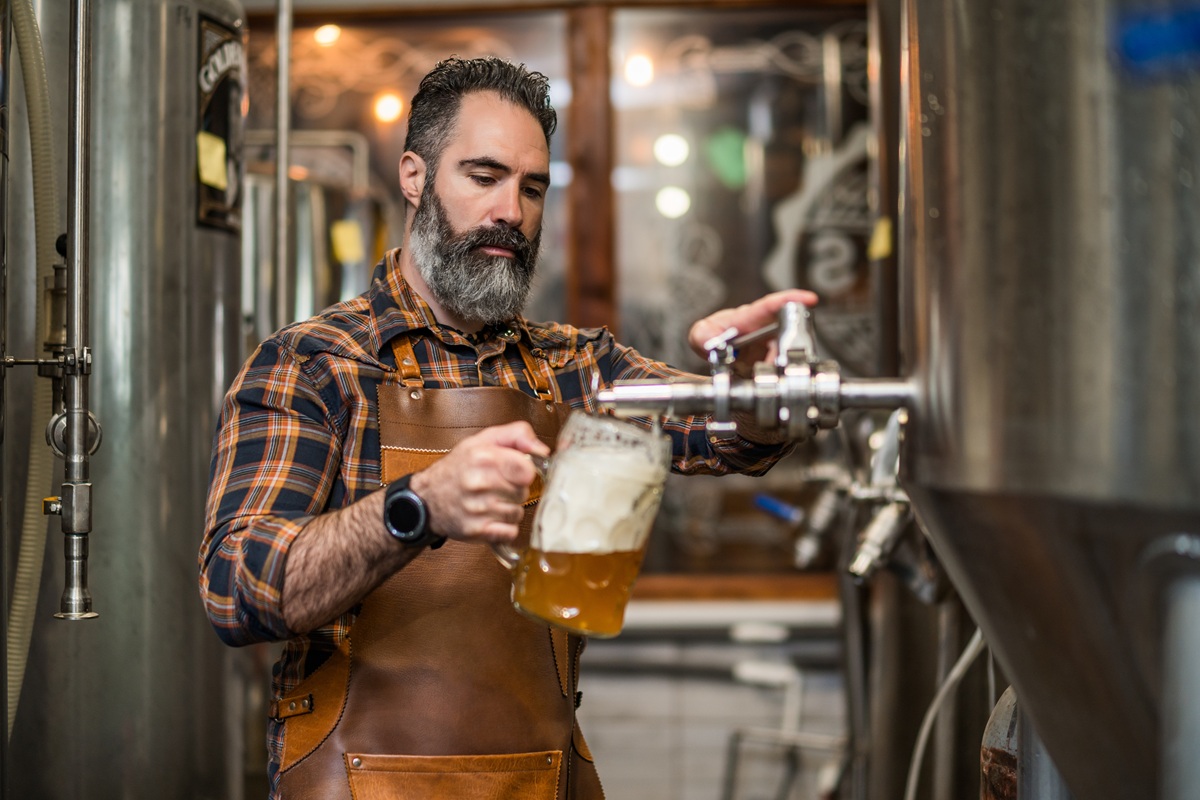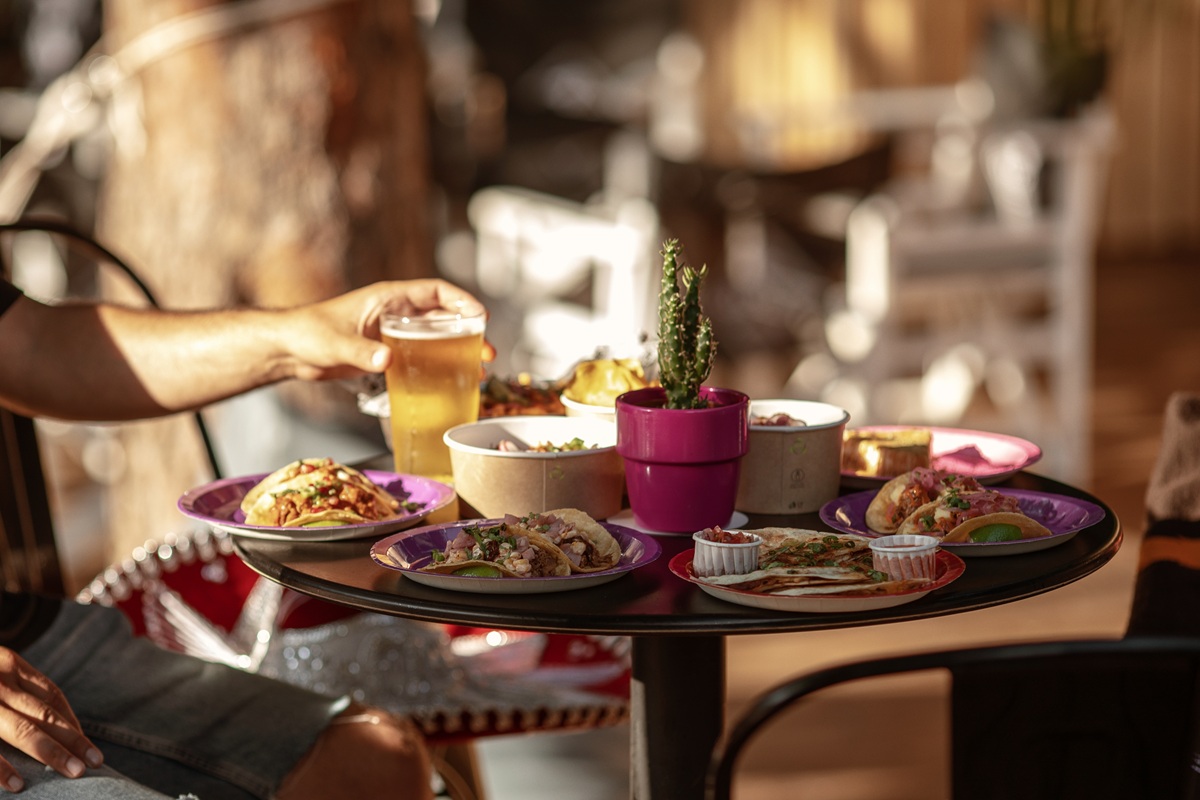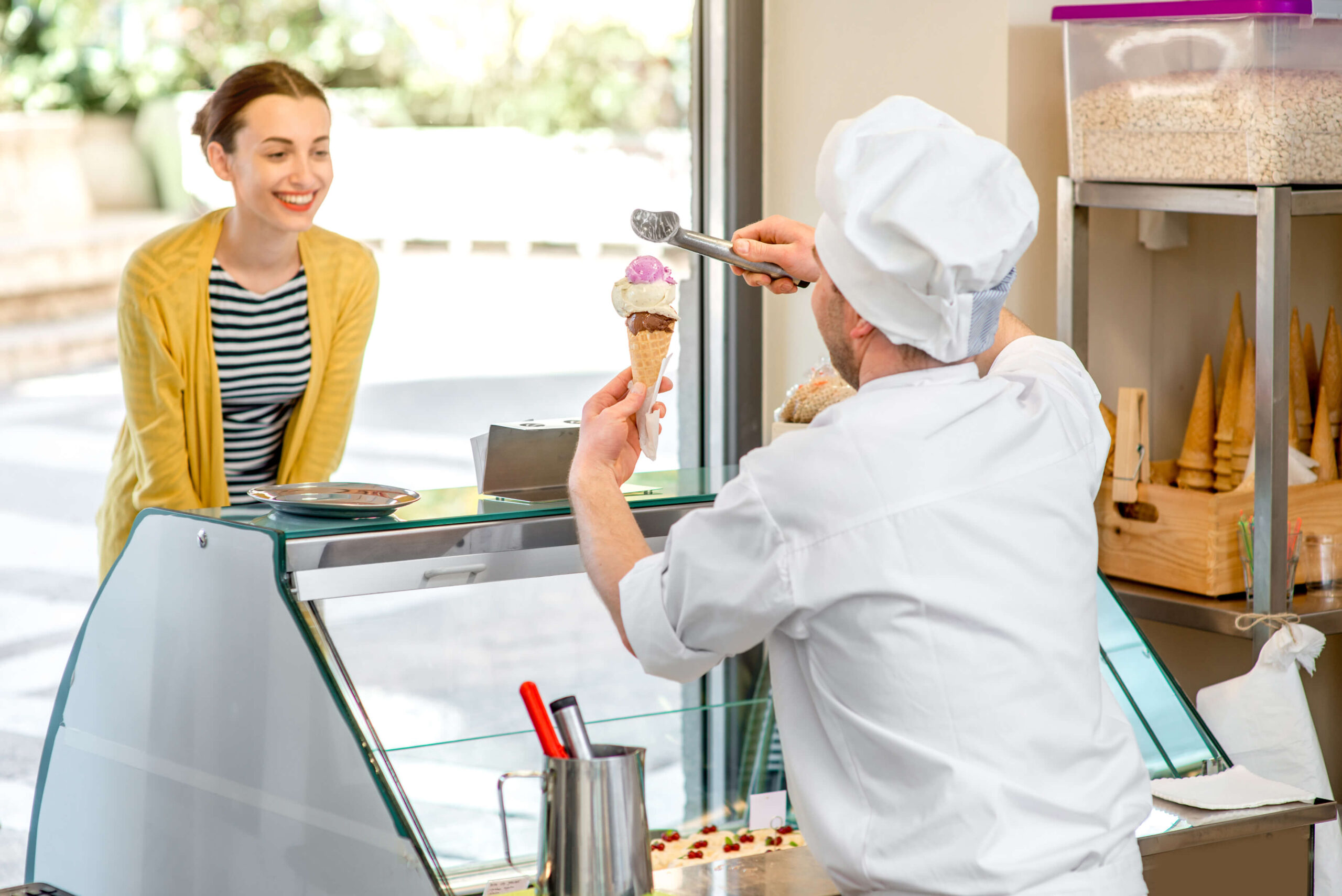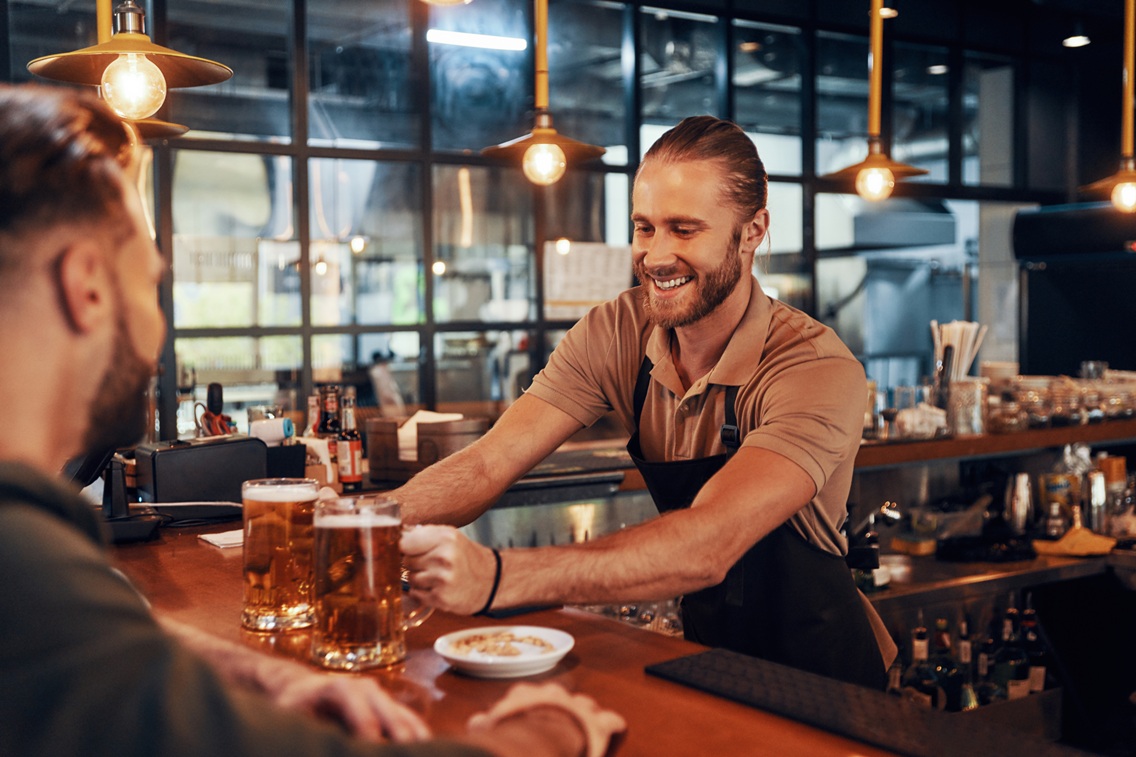- Do market research & competitive analysis
- Put together a strong business plan
- Choose the best location for a coffee shop in your area
- Brainstorm the best things to sell in a coffee shop
- Obtain all the licenses & permits you need
- Find the perfect coffee suppliers
- Order your coffee shop equipment & inventory
- Get an easy-to-use coffee shop POS
- Put together Standard Operating Procedures (SOPs) for your coffee shop
- Hire & train your staff
- Design your coffee shop interior & exterior
- Organize a soft opening to test run your menu & operations
- Market your coffee shop grand opening online & offline
- Think of ways to continuously attract new & returning customers
- Focus on long-term growth and expansion
- Opening and closing checklist for coffee shop
- Useful resources
- Frequently asked questions
A coffee shop opening checklist is a must-have to ensure proper organization. The café opening checklist must include a strong business plan, location selection, menu choice, technology preferences, staffing, and efficient marketing strategies.
Be it rain or sunshine, a coffee shop will always attract people who crave their daily cup of joe. Thinking of opening a café yourself, but don’t know where to start? We’ve got you.
Below, we’ve compiled a coffee shop opening checklist that will walk you through the steps of starting your own café, from choosing the location to marketing the grand opening.
- Do market research & competitive analysis
- Put together a strong business plan
- Choose the best location for a coffee shop in your area
- Brainstorm the best things to sell in a coffee shop
- Obtain all the licenses & permits you need
- Find the perfect coffee suppliers
- Order your coffee shop equipment & inventory
- Get an easy-to-use coffee shop POS
- Put together Standard Operating Procedures (SOPs) for your coffee shop
- Hire & train your staff
- Design your coffee shop interior & exterior
- Organize a soft opening to test run your menu & operations
- Market your coffee shop grand opening online & offline
- Think of ways to continuously attract new & returning customers
- Focus on long-term growth and expansion
What Are the Benefits of a Coffee Shop?
If you’re on the fence about whether a coffee shop is the right type of business for you, check out these advantages of being a coffee shop owner:
- Coffee is in high demand: According to the National Coffee Association, daily coffee consumption is at its highest level in over 20 years, up nearly 40% in 2024. Moreover, 67% of US adults had coffee in the past day, with 57% having had a specialty coffee in the past week.
- You can sell more than coffee: Don’t think that owning a coffee shop limits you to coffee beverages. From pastries to sandwiches, craft sodas, fresh juices, and even ice cream, you can diversify your menu to attract a wider range of customers.
- Coffee shops are a great community hub: If you’re a regular at your local coffee shop, then you know they can be hubs where people get together with their friends to chat or work. By organizing community events and opening up your space to different groups, you will foster lifetime loyalty.
Coffee Shop Profitability Statistics
The average profit margin for small, independent coffee shops is about 15%. This would translate to about $450.000 to $500,000 a year.
If you’re wondering, “How much do coffee shop owners make?”, once you take into account taxes, wages, utilities, and so on, the answer is somewhere between $60,000 and $160,000 a year.
All in all, the future looks bright for coffee shops, with the market expected to grow from $54 billion in 2024 to $72 billion in 2028.
How Hard Is It to Open a Coffee Shop?
Despite its promising future, the coffee shop industry, like any other food and beverage industry, comes with its unique set of challenges. Here are a few issues you might have to contend with:
Coming up with unique coffee shop ideas
Since competition is fierce, you need to come up with a winning concept that will differentiate you from the rest.
There are three main types of coffee shop business models that you can start with: independent, franchise, and mobile. Let’s take a quick look at each of their characteristics.
Independent coffee shop:
- Standalone business that is unique to the local community.
- Allows for more creative control over branding, design, menu, etc.
- Requires a more substantial initial investment.
Franchise coffee shop:
- Operates under an established coffee shop brand’s name.
- Limits creativity due to adhering to strict brand guidelines.
- Provides initial training, ongoing support, brand recognition, and lower risk.
Mobile coffee shop:
- Operates from a van, truck, or cart, which provides flexibility.
- Has minimal startup costs and can reach a wider audience.
- Is dependent on the weather, and very specific permits and licenses.
To come up with a new and fresh concept, you also need to define your Unique Selling Proposition (USP). An example of a USP can be:
Our coffee shop is dedicated to celebrating local seasonal flavors. Each season, our expert baristas introduce new and exciting flavors to the menu, from floral and fruity summer blends to rich and spicy autumn aromas. All of the flavors are inspired by and crafted together with local artisans and businesses.
Here are a few examples to kickstart your creativity:
- Cat or animal café
- Drive-thru coffee shop
- Bookstore & coffee shop
- Art gallery & coffee shop
- Board game café
- Coffee roastery
- Co-working café
- Coffee (AM) & wine (PM)
Securing customer loyalty
With so many coffee shops on every corner, it’s difficult to convince customers to keep visiting yours. Of course, quality coffee is a first step toward that goal. But you can also delight customers with:
- Coffee tastings
- Live music and other events that gather the community
- Limited-time coffee-based specials
- Exclusive promotions for returning customers
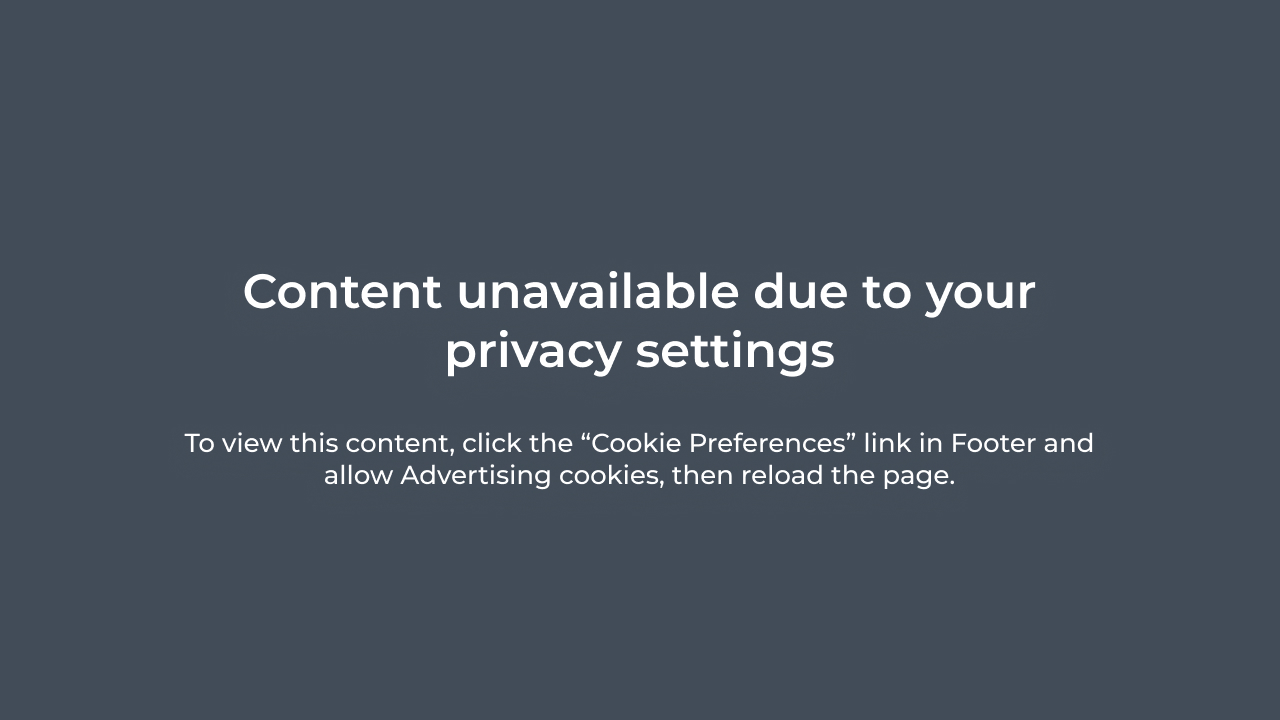
Low transaction values
Customers won’t spend as much at a coffee shop as they would at a restaurant. While a cup of coffee is typically cheap, you can increase the average check value by upselling pastries, sandwiches, and other treats that go well with coffee.
Additionally, instead of just relying on your in-store sales, enable customers to order coffee at home to unlock an additional revenue stream.
With GloriaFood, you can do that by tonight. And the best part? It doesn’t cost a thing. All you need to do is add a Menu & Order button on your website.
How Much Does It Take to Open a Coffee Shop?
Depending on the type of coffee shop you want to open, the cost will vary:
- Table service coffee shop: $80,000 – $300,000.
- Coffee shop truck or kiosk: ~ $60,0000.
Keep in mind that while a brick-and-mortar coffee shop costs more to open, it also provides you with a physical location where you can organize events and gather the community.
On the other hand, a coffee shop truck gives you the flexibility to travel around to food and music festivals, but limits you when it comes to space.
Let’s look at a breakdown of the average costs of opening a coffee shop in an urban area in the US.
- Insurance: $3,000 – $6,000
- Design: $10,000 – $15,000
- Equipment and furnishings: $40,000 – $80,000
- Inventory and supplies: $3,000 – $6,000
- Staffing and training: $15,000 – $30,000
- Marketing & promotion: $5,000 – $10,000
These costs will differ depending on your location, the type of coffee shop you want to open, the amount you are willing to invest, and other such factors. Keep in mind that you have to do your own research based on these factors to reach a more accurate cost for your particular case.
If this is not capital that you have readily available, you need to consider the funding options at your disposal:
- Bank loan
- Small Business Administration (SBA) loan
- Friends and family loan
- Equipment loan
- Business line of credit
- Venture capital firm
- Angel investors
- Crowdfunding
- Government and private grants
- Franchising
Coffee Shop Opening Checklist: 15 Steps to Success

What do I need to open a coffee shop? What are the most important coffee shop requirements? What is the best technology for an up-and coming coffee business? Find out the answer to these questions and many others below in this comprehensive coffee shop opening checklist:
1. Do market research & competitive analysis
Researching the coffee shop market and competition is a crucial step in opening a cafe because it gives you a clear view of what to expect.
Here are questions you need to answer when researching the market and competition:
- Who is your target market? The first step is to identify your ideal customer, their age, occupation, income, lifestyle, and coffee-drinking habits. For example, your target audience could be students aged 18-30 who are keeping long hours and want a cozy coffee shop where they can grab a cup to go or organize study groups.
- What does your target market want? What are their coffee preferences, purchasing habits, and expectations from a coffee shop? You can conduct surveys to find this out.
- What is trending in the coffee shop market right now? Keeping up to date with the latest trends will help your cafe become popular, whether it’s a new brewing method or coffee flavor.
- Who are your immediate competitors in the area? Think of the area where you want to open your coffee shop and research the competition. You need to look at their menu, pricing, coffee quality, ambiance, customer service, and marketing.
- Can you identify your competitors’ strengths and weaknesses? This will help you adopt the things they’re doing right and find gaps in their offerings that you can fill.
- Where are your competitors getting their coffee supplier from? Coffee bean suppliers and roasters are crucial for the success of your business. Finding out where popular coffee shops are getting their supplies from can help you source quality ingredients.
2. Put together a strong business plan
One of the first things you need to start a coffee shop is a good business plan. It will serve as the blueprint on which you’ll build your coffee shop. It can help you anticipate your needs and prepare you for a successful opening.
Here’s what your coffee shop business plan should include:
- Concept and USP (unique selling point)
- SWOT analysis (strengths, weaknesses, opportunities, and threats)
- Legal structure and ownership
- Target audience
- Competitor analysis
- Coffee shop cost breakdown
- Financial projections
- Main milestones and timelines for growth
- Menu and pricing
- Staff hiring and training
- Organizational structure
- Workplace policies
- Marketing strategy
3. Choose the best location for a coffee shop in your area
What do you need to open a coffee shop? A great location! The space you choose could make or break your business. That being said, take your time scouting for the perfect location. Here are some factors to keep in mind:
- Higher foot traffic = higher turnover
- Easy accessibility by foot, personal car, and public transportation
- Proximity to your target audience
- Competition in the area
- Growth potential of the area
- Visibility for passers-by and the option to place signage outside to attract more eyes
- Rent affordability
- Insurance requirements
- Space requirements and opportunities for expansion
- Restrictions on redesigning and remodeling
- Distance from your coffee suppliers
4. Brainstorm the best things to sell in a coffee shop
What do you need to start a café? An irresistible menu! Naturally, as a coffee shop, your main focus will be coffee. Consider offering different coffee varieties to satisfy all tastes.
Additionally, besides coffee staples like espresso and latte, brainstorm specialties that will be unique to your café and that customers won’t be able to find anywhere else.
For those people who want to enjoy a hot beverage but are all caffeinated out, add a variety of teas to the menu as well.
If you want your coffee shop to thrive, you should also offer some light food options that go great with coffee. Here are some coffee shop food menu ideas you can try: baked goods, sandwiches, bagels, salads, soups.
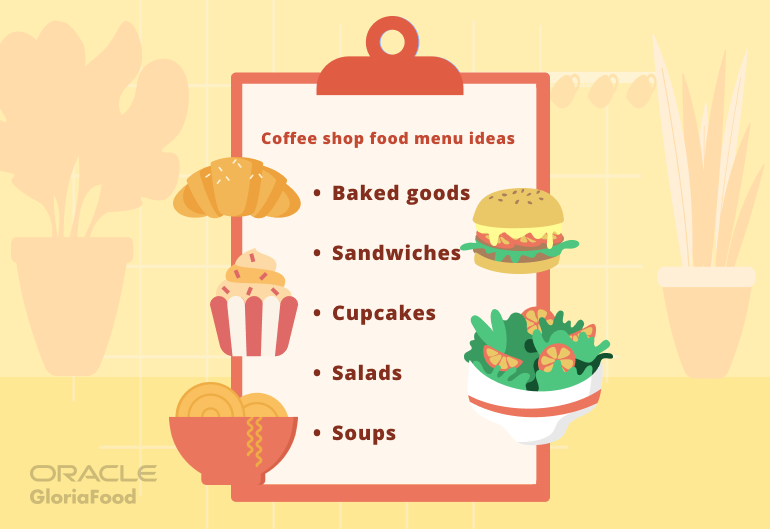
If this seems overwhelming, don’t worry. You don’t need to start with a long menu from the beginning. Focus on a few staples first and then update the menu as you go.
Worried about the cost of reprinting all the menus every time you make a change? We have a better alternative: a QR code menu that you can make unlimited changes to every day.
Using a QR code menu at your coffee shop means customers will be able to order and pay fast, directly at the table. This will lead to:
- Lower wait times
- Faster table turnover
- A better guest experience
- Reduced costs
- Higher revenue
Follow these simple steps to enable on premise ordering at your coffee shop for free:

5. Obtain all the licenses & permits you need
Next, what licenses do you need to open a coffee shop? The answer may differ depending on where your café is located. However, these basic permits and licenses are generally needed across the board:
- Business license
- Seller’s permit
- Foodservice license
- Food handler’s permit
- Employee Identification Number
- Building permit
- Occupancy permit
- Waste disposal permit
- Insurance (liability, property, business interruption, workers’ compensation)
Additionally, based on your specific needs, you may also need a:
- Sign permit
- Live entertainment license
- Music license
- Outdoor seating permit
- Liquor license
There are also other aspects of legal compliance that you need to keep in mind when opening a coffee shop, such as:
- ADA (Americans with Disabilities Act) Compliance: This ensures equal access to public spaces for individuals with disabilities. It includes both physical accessibility, such as wheelchair ramps, wide doorways, and accessible restrooms, and accessible services, such as menus in alternative formats and ADA-compliant websites.
- Employment laws: You need to familiarize yourself with federal and state employment laws, such as minimum wage requirements, overtime pay rules, anti-discrimination laws, employment contracts and handbooks, employee onboarding, and so on.
- Trademark and branding: To protect your name, logo, and branding legally, you need to register a trademark with the appropriate government agency in your area. You should also protect your marketing materials, website content, and recipes under copyright law. If needed, consider non-disclosure agreements (NDAs) with employees or business partners that might be privy to sensitive information about your recipes, business goals, etc.
6. Find the perfect coffee suppliers
If you want your coffee shop to stand out, you need, first and foremost, to sell quality coffee. That is why finding the best suppliers is a crucial step in your coffee shop opening checklist.
Here are some things to keep in mind when choosing coffee suppliers:
- Look for local farmers and suppliers that can help you source fresh and seasonal coffee beans.
- Sample a variety of roasters and taste the coffee first-hand before you find the one for you.
- Visit the supplier’s warehouse to see how the beans are stored and packaged.
- Consider fairtrade coffee that is ethically sourced to cater to the conscious consumer.
- Be transparent with your customers about who your suppliers are.
Now, let’s dig a bit deeper into building relationships with local roasters and suppliers:
- Create a list of reputable coffee roasters in your area. If you don’t know any, you can attend trade shows and events in the area.
- Visit the roasters and discuss a possible long-term partnership that includes custom blends, exclusive offers, and unique flavors.
- Negotiate a contract that benefits both parties and includes information on price, delivery schedule, exclusivity, minimum order quantities, etc.
- Keep in constant contact with the roasters and host joint events like coffee workshops that will expand both of your reach in the community.
When sourcing coffee for your cafe, keep in mind that seasonality plays an important role. Different regions have different harvesting seasons for their coffee varieties, so you need to plan your menu accordingly to take advantage of each type of coffee when it’s at its freshest.
For example, Ethiopian coffees are more prevalent in the winter, while Kenyan and Colombian variants shine in the spring. This also enables you to create limited-time menu items and special promotions that customers will be dying to sample every season.
7. Order your coffee shop equipment & inventory
You have your dream location. Now, it’s time to complete the cafe equipment checklist:
- Espresso machines
- Drip coffee makers
- French presses
- Coffee grinders
- Coffee roasters
- Fridges
- Freezers
- Blenders
- Ice machine
- Ovens and toasters, if you’re also going to serve food
You’ll also need the following supplies: frothing pitches and thermometers, espresso tampers, measuring cups and spoons, syrup pumps, mugs and cups, storage containers.
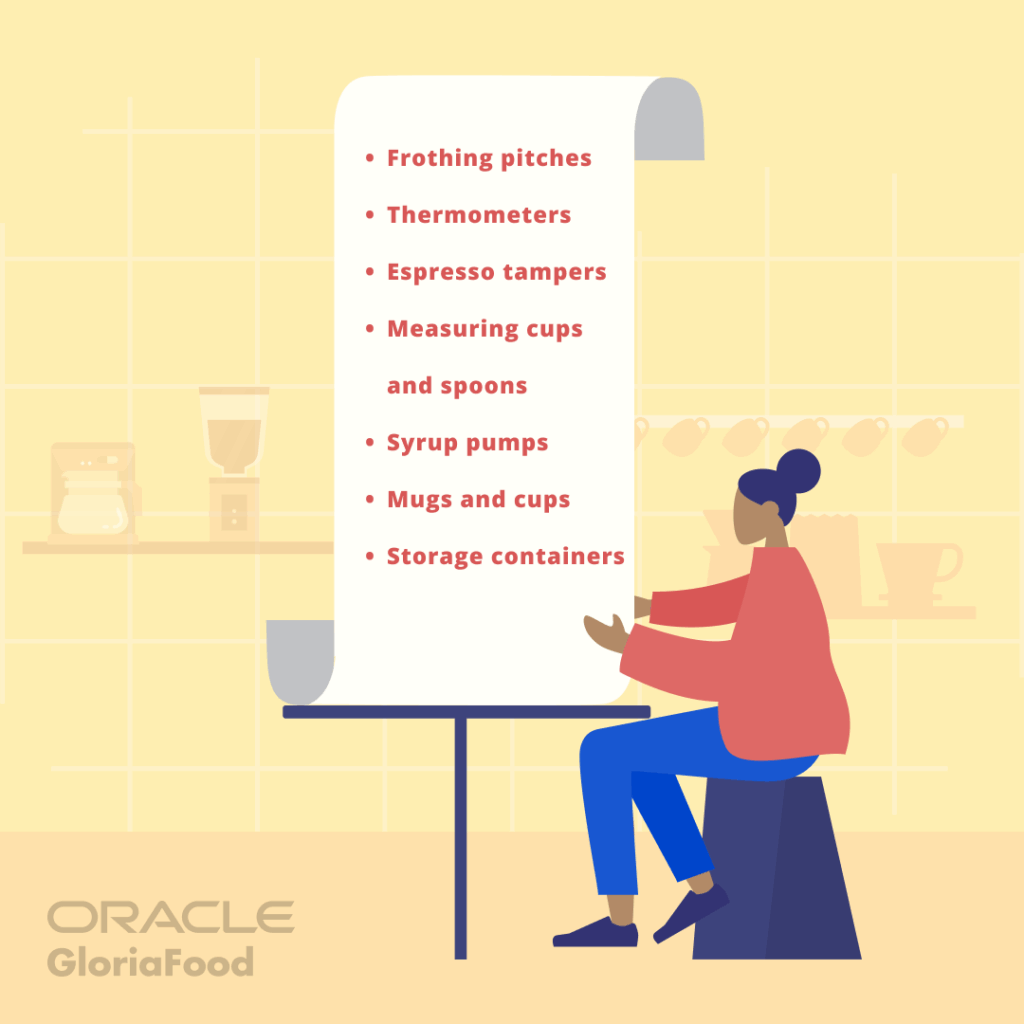
Finally, here is a coffee shop inventory checklist containing other consumables besides coffee:
- Milk and milk alternatives
- Creamers
- Sugar and sweeteners
- Flavoring syrups
- Spices
- Tea
- Hot chocolate
- Coffee filters
- Cup sleeves and carriers
- Lids and straws
8. Get an easy-to-use coffee shop POS
If you’re wondering how to make a coffee shop profitable, it all starts with innovative technology that will lower costs, streamline operations, and boost profits. Case in point: a coffee shop POS system.
The GloriaFood café POS system contains features designed to help coffee shops thrive, such as:
- Color-coded menu categories and a sales-focused layout that helps servers easily identify and upsell your products for lightning-fast checkout.

- Intuitive hand gestures so you can serve more customers faster.
➡️ Swipe to delete an item from the check
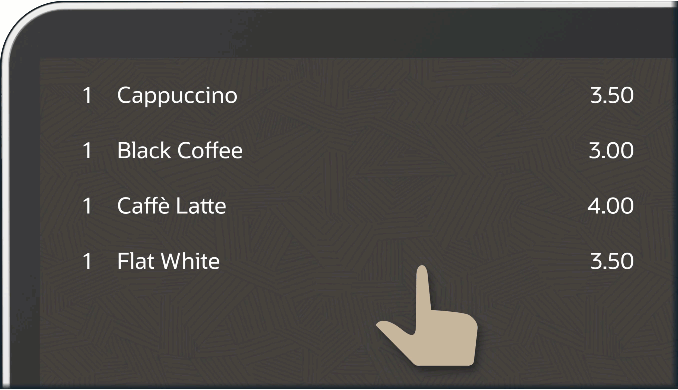
➡️ Click on a menu item to increase the number by 1
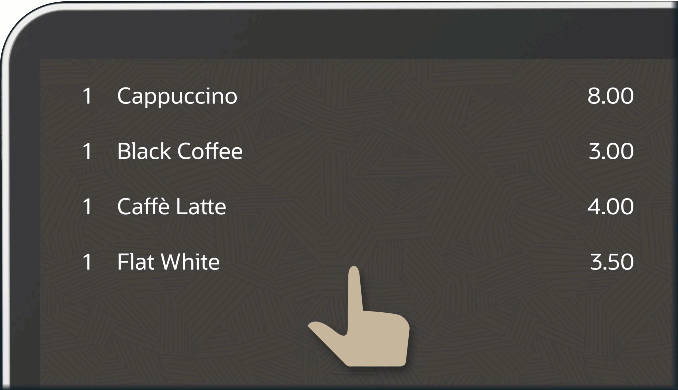
➡️ Long click to reset the quantity
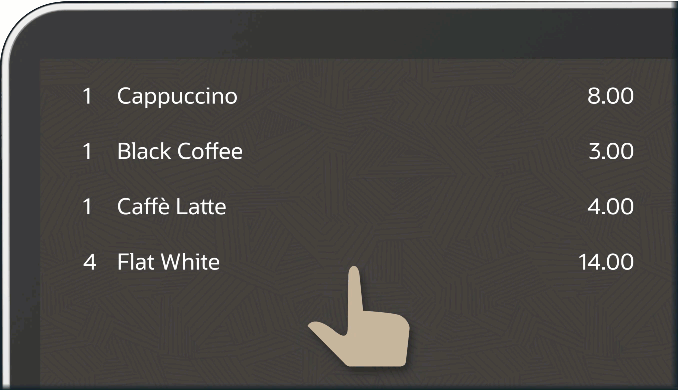
- Offline mode designed to help you process payments and take orders even when the internet is down.
- Easy menu inventory so you can keep track of how many items you have left. You can mark items as out-of-stock to avoid customers complaining about ordering something that’s no longer available.
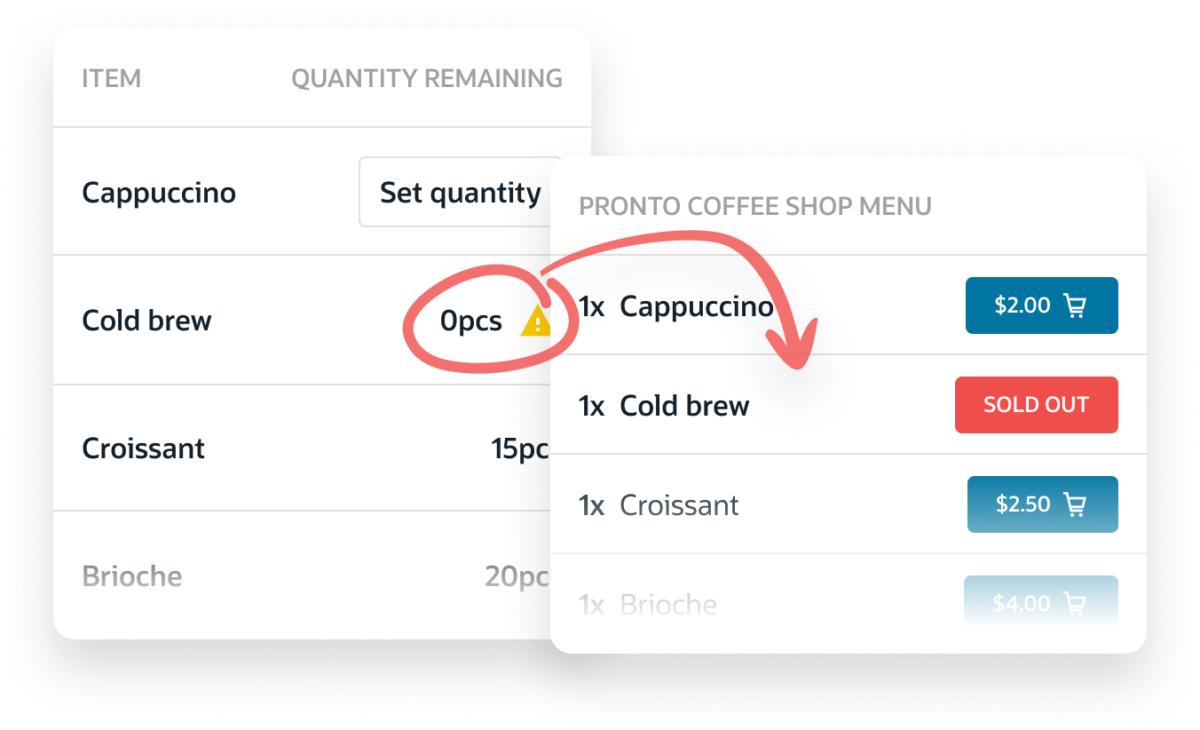
- Access to detailed coffee shop reports and analytics that can help you track your profitability and discover:
➡️ Net sales
➡️ Order types
➡️ Cash payments
➡️ Open check reports
➡️ Most wanted menu items and categories
➡️ and more

And perhaps the best benefit of them all? Our coffee shop POS will be on its way to you in minutes. You can place the order during your coffee break:
1. Create a free account
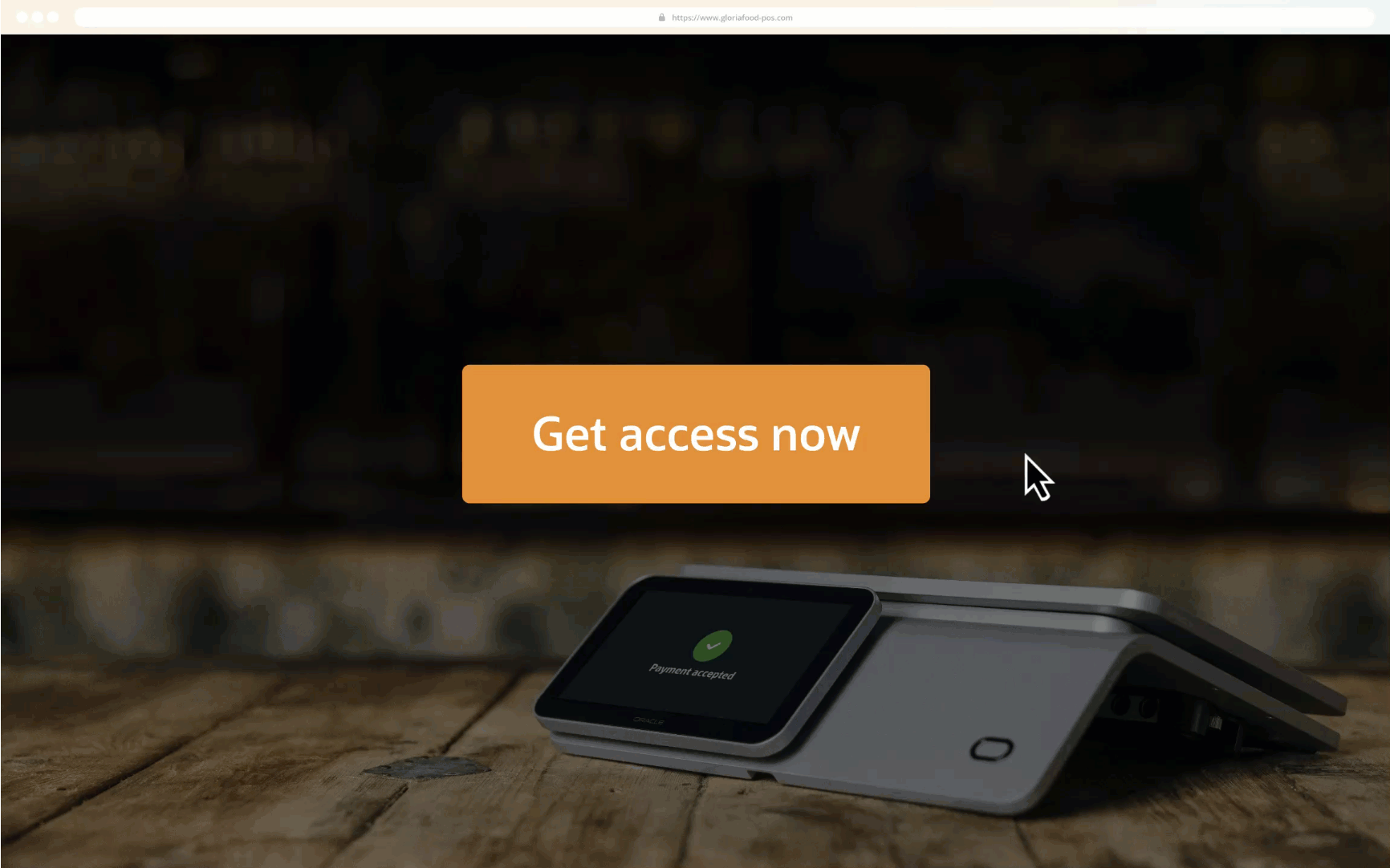
2. Order your free starter kit hardware and any additional hardware you might need

Don’t skip on probably on the most important steps of a coffee shop opening checklist: securing the best technology. No matter if you are opening a small café or want to venture into a bigger adventure, the GloriaFood POS system is the best partner.
Choose the best POS for your coffee shop, coffee house, or roastery
Choose GloriaFood POS & get your free starter kit today
I want my café POS9. Put together Standard Operating Procedures (SOPs) for your coffee shop
Standard Operating Procedures (SOPs) are what will keep your business running smoothly. They are a set of step-by-step instructions that detail different tasks and processes in your coffee shop. Here is a list of the most common coffee shop SOPs:
Customer service:
- Welcome customers as they enter and provide prompt service.
- Listen to their questions and offer immediate assistance.
- Upsell add-ons like pastries and snacks to go with their coffee.
- Inform customers of the payment methods available.
Coffee preparation:
- Follow standard recipes for coffee beverages.
- Use the set ratios of coffee to water.
- Grind coffee beans just before brewing to ensure freshness.
- Use the appropriate grind size for the brewing method.
- Do latte art for an enhanced customer experience.
- Serve the beverages promptly to maintain optimal temperature.
Cleaning & maintenance:
- Clean and sanitize all surfaces, utensils, and equipment regularly.
- Wipe down coffee machines and grinders.
- Clean the steam wand after each use.
- Empty and clean the drip trays and coffee grounds containers multiple times a day.
- Perform a weekly deep cleaning of all the equipment.
- Regularly clean and restock the restroom.
- Schedule regular maintenance for the coffee machines.
- Dispose of waste properly and recycle.
Storage & freshness:
- Coffee beans must be stored in a well-ventilated area with a consistent temperature between 15-21 degrees Celsius (59-69 degrees Fahrenheit).
- Use air-tight containers to prevent exposure to oxygen.
- Implement the first-in, first-out (FIFO) storage method to ensure old stock is used first.
- Label containers with the roasting date and batch number.
- Grind coffee in small batches to maximize freshness.
10. Hire & train your staff
When hiring personnel for your coffee shop, look for people who are truly passionate about coffee and coffee-making. This will distinguish your coffee shop from the competition because they’ll be able to better answer customers’ questions and provide insight into the types of coffee on offer.
When it comes to training and managing your coffee shop employees, your GloriaFood POS system can come to the rescue.
How? By making it easy to:
- Add or remove employees
- Update employee roles and privileges
- Use the “Training mode” to limit new employees’ access until they’re ready

- Get access to all your employees’ transactions
- Enable employees to quickly log into the POS with the help of the RFID cards included in our starter kit
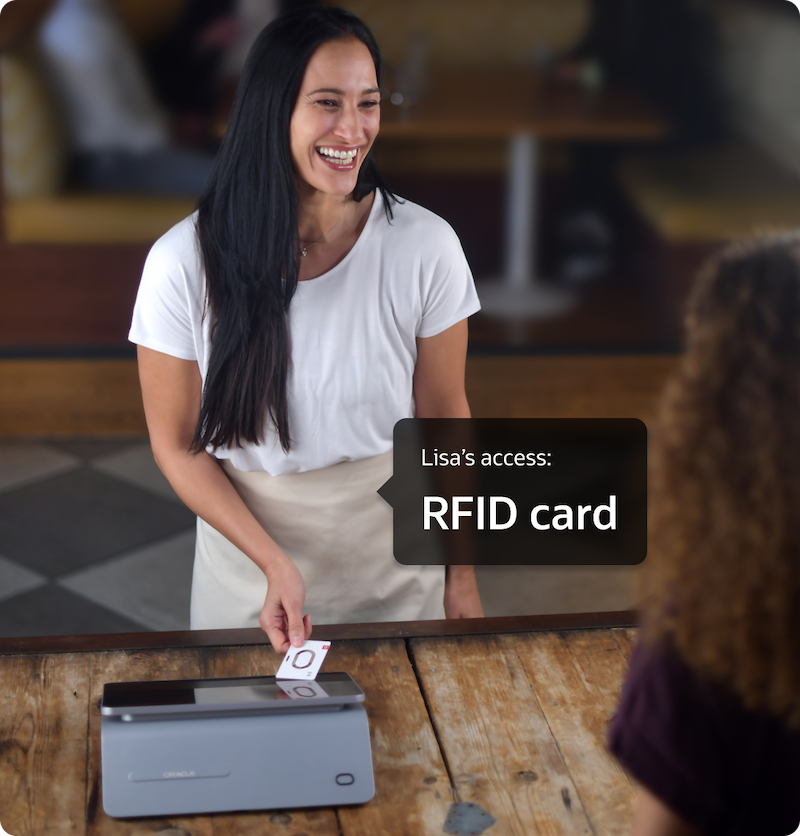
Here is a list of key aspects that you need to focus on when training your coffee shop employees:
- Barista training program: From espresso extraction to milk steaming techniques and latte art, ensure even beginner baristas know how to properly use the equipment to make a delicious cup of coffee.
- Customer service protocols: How to greet customers, handle complaints, upsell and cross-sell, handle busy periods, and create a pleasant atmosphere at your coffee shop.
- Coffee education: Constantly improve your staff’s knowledge of coffee origins, flavor profiles, brewing methods, and industry trends.
- KPIs and performance evaluations: Set clear key performance indicators (KPIs), conduct regular performance reviews, implement peer feedback, and offer incentives and rewards for great performance.
- Schedule optimization: Create schedules that ensure sufficient coverage during busy times, while avoiding overstaffing during slower periods. Train employees to handle multiple roles in case of emergency and encourage constant communication between team members.
11. Design your coffee shop interior & exterior
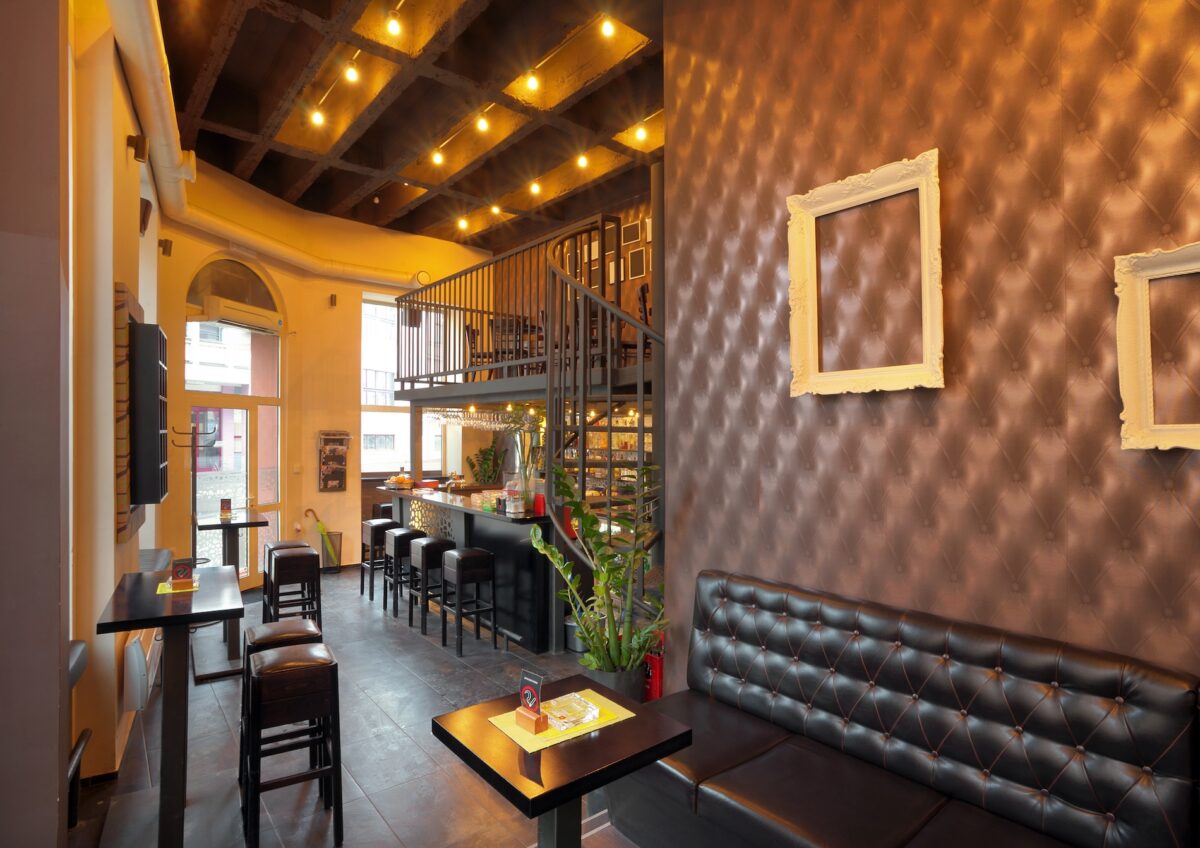
To make a great first impression, you need to design an exterior that stands out so you can attract first-time customers. Then, get them to keep coming back with:
- A cozy interior;
- Instagrammable décor
- Comfortable seating.
The layout of your coffee shop also matters because it can help you serve customers faster. Ensure there is a short and clear path from the kitchen and counter to the tables.
When decorating your coffee shop, think of your target audience. What do they like? Is it cozy armchairs and hanging plants or industrial decorations and neon lighting?
Additionally, if you have the space, consider outdoor seating or a patio area where customers can soak up the sun while enjoying your delicious beverages. This will also boost daily sales, as you will be able to serve more customers every day.
Want to fill those seats faster? Enable table reservations and pre-orders on your website so customers don’t have to wait to be seated.

In fact, offering online bookings should be an important part of your coffee shop opening checklist because it creates a seamless reservation experience. The more satisfied your clients are, the more likely they are to come back and recommend your café to others.
12. Organize a soft opening to test run your menu & operations
Look at a soft opening as a trial run before you officially open your doors. Invite family and friends for a fun day at your coffee shop and gather valuable feedback that can help you optimize operations, improve the menu, and increase productivity.
Here are some tips & tricks that will make your soft opening a success:
- Invite guests at different times, so you can mimic the ebb and flow of regular business hours.
- Provide guests with feedback forms at the end of the visit. Ask about the menu, ambiance, service, and coffee quality.
- Simulate different types of customer interactions, from taking coffee orders to handling complaints.
- Time how long it takes your staff to prepare and serve different types of coffee so you can optimize service speed.
- Test every piece of equipment to ensure it’s in running order for the big day.
- Create backup plans in case of equipment failure.
- Analyze the feedback you get on the coffee sizes and pricing.
- Review how well people can understand your menu and make any changes if necessary.
- Map out the customer journey from arrival to exit to identify areas for improvement.
- Evaluate the process of taking orders and bringing the check.
- Ensure your staff are familiar with the various payment methods you offer and can provide accurate change.
13. Market your coffee shop grand opening online & offline
Once everything is in place, it’s time to prepare for the grand opening with an airtight marketing strategy. Here are a couple of ideas to ensure everyone hears about your new coffee shop:
- Stick posters around the neighborhood announcing the date and time of the opening, as well as your address and what customers can expect if they decide to join.
- Print and distribute flyers with an online first-order discount code: This will help spread the word about your delivery service. You can easily do that using the GloriaFood flyer generator built into our online ordering system.
- Create a Google Business Profile for your new restaurant so that more customers can find you online. Remember to add your opening hours, website, address, and contact information to your profile.
- Post about it on your website. That way, customers can get all the information they need directly from the most reputable source: you.
Our sales optimized website comes with a handy announcement section that you can edit to spread the word about your grand opening:

The website is optimized for local searches when people are looking for your cuisine. That way, you will gain more visibility online and bring more customers to your restaurant.
- Tease it on social media. To create anticipation and excitement before the big day, post teasers of your menu, decor, and special offers. Also, let customers know they can order directly on Facebook by clicking the “Start Order” button.

- Promote limited-time offers only available on the day. What better way to draw customers to your coffee shop than with the promise of a discount or freebie? Add a few grand opening specials at the top of your menu so they’re impossible to miss. You can choose from our 13 tried-and-tested templates or create your own promo logic in the GloriaFood Promotions Module.

- Consider partnering with influencers for the grand opening. Invite small influencers in your area to sample your menu and share it with their followers. Provide them with a personalized discount code they can give to their fans – this is a win-win strategy: they make their followers happy, and you gain more customers.
14. Think of ways to continuously attract new & returning customers
Once your coffee shop is open, your main job is to figure out ways to bring in business. We’ve put together a few marketing strategies that will help:
- Email marketing campaigns for customer retention: Send automated emails to customers who haven’t ordered in a while, have only ordered once, or have abandoned their carts. The email marketing module from GloriaFood segments customers based on these behaviors and delivers targeted emails that feature irresistible discounts. The result? More returning customers for you.
- Event hosting and community building: Become the place to be in the neighborhood by organizing coffee tasting workshops, open mic nights, book club sessions, art exhibitions, community fundraisers, workshops and seminars, or even holiday parties.
- Seasonal marketing campaigns: Capitalize on seasonality to make your coffee shop the talk of the town. For example, fall is perfect for a harvest festival event with menu specials like pumpkin spice latte and apple cider donuts. In the cold season, organize a winter wonderland extravaganza with beverages like peppermint mocha and gingerbread latte. You can also capitalize on holidays like Valentine’s Day or events like Back to School.
- Mobile ordering: Enable your customers to place orders more easily through an app on their phones. This will increase brand recognition and loyalty, ultimately bringing in a consistent revenue stream. GloriaFood offers a premium branded app service that allows you to put your brand into your customers’ pockets. It only takes minutes to generate your own restaurant app – no technical knowledge required.
15. Focus on long-term growth and expansion
Looking to the future, it’s important to focus on making your coffee shop grow and reach a larger audience. Here are a few tips on expanding and improving your coffee shop concept:
- Keep your menu fresh by introducing new coffee items, limited-time specials, and trendy flavors, and implementing customer feedback.
- Collaborate with complementary local businesses on events, charitable initiatives, sponsorships, and more.
- Expand your service by providing catering for local businesses, offices, and corporations.
- Consider providing coffee subscriptions for both individuals and companies.
- Conduct market research to identify potential new locations for your coffee shop when you feel like you’re ready to expand.
- Consider franchising and allowing others to open a coffee shop under your brand.
Opening and closing checklist for coffee shop
A coffee shop checklist isn’t just for launching your business, it can be a useful tool to ensure your business is organized and every task gets taken care of each day. To help your employees thrive, you can have them use a coffee shop opening and closing checklist.
Daily opening checklist for coffee shop
Motivate your staff members to be productive since the early morning hours! You can use this coffee shop checklist template for inspiration:
- Prepare the space for customers by turning on lights, cooling or heating, and music;
- Ensure every surface is clean, including restrooms;
- Turn on every piece of equipment, such as espresso machine or POS;
- Restock items such as napkins and coffee cups before clients arrive;
- Prepare food items and display them in a visually attractive way.
Coffee shop closing checklist
The more tasks that get done in the evening, the easier it will be for the morning shift to open the coffee shop. Check out some common closing tasks:
- Clean the establishment, including tables, chairs, serving surfaces and floors;
- Check the equipment and power it off;
- Restock disposables and coffee beans;
- Count the cash register and secure the cash;
- Ensure all food items are refrigerated accordingly;
- Check that all the windows and doors are locked.
Where to Next?
You’ve arrived at the end of this coffee shop opening checklist, which means you’re ready to open your doors.
If you still have doubts before the big day, organize a soft opening with friends and family first. They can provide you with valuable feedback that will help you iron out any kinks before you open to the public.
Want to keep on reading? Check out these related articles for more tips & tricks on opening a food business.
Frequently Asked Questions
The main supplies you will need to open a coffee shop are coffee brewers, grinders, hot water dispensers, decanters, coffee roasters, and frappe blenders.
The legal requirements to open a café involve obtaining the following: Business license, Seller’s permit, Foodservice license, Food handler’s permit, Employee Identification Number, Building permit, Waste disposal permit, Insurance.
To prepare for opening a coffee shop, you must create a business plan, find a suitable location, concoct an interesting menu, obtain the necessary equipment and licenses, determine your pricing, and start marketing the business.
To set up a coffee shop, you will need to invest between $80,000 – $300,000 for a table service business and around $60,0000 for a kiosk, depending on location and ingredient prices.
The ideal location for a coffee shop is in a high-traffic area that can be reached easily by car and public transport. For example, in the historic center of the city, near offices and universities, or around a busy retail area.
For a table-service coffee shop that only sells beverages and pastries, 15-20 seats will ensure a steady profit and high table turnover. For coffee shops that also provide lunch service, 35-50 seats will be necessary to accommodate clients.
- Do market research & competitive analysis
- Put together a strong business plan
- Choose the best location for a coffee shop in your area
- Brainstorm the best things to sell in a coffee shop
- Obtain all the licenses & permits you need
- Find the perfect coffee suppliers
- Order your coffee shop equipment & inventory
- Get an easy-to-use coffee shop POS
- Put together Standard Operating Procedures (SOPs) for your coffee shop
- Hire & train your staff
- Design your coffee shop interior & exterior
- Organize a soft opening to test run your menu & operations
- Market your coffee shop grand opening online & offline
- Think of ways to continuously attract new & returning customers
- Focus on long-term growth and expansion
- Opening and closing checklist for coffee shop
- Useful resources
- Frequently asked questions
Get your restaurant POS system
More than [[restaurants_number]] customers have advanced their restaurant businesses with GloriaFood
